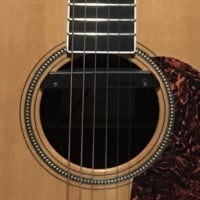Welcome! Here are the website rules, as well as some tips for using this forum.
Need to contact us? Visit https://heatinghelp.com/contact-us/.
Click here to Find a Contractor in your area.
If our community has helped you, please consider making a contribution to support this website. Thanks!
When are hydro separators required?
Options

D107
Member Posts: 1,944
The Caleffi Idronics Journal article recently posted by Andrew Hagen suggests that changing out an old cast iron boiler with low flow resistance to a new compact boiler with higher flow resistance could result in flow interference between two competing zones. In a 40K loss system (2 of 3 floors cast iron) 80K emitters --CI zones piped unfortunately in series--would this be a likely problem? Is this more of a problem going from old atmospheric to newer atmospheric or only to mod cons? Seems to me I've seen many install photos here that did not have hydro separators, but of course my untrained eye may not have picked it up, or the separation was done with piping and not a separator unit.
It also seems that balance flow valves are only accurate on design days so I'm not sure that's a reliable route.
We are putting in a reverse indirect, which can be piped as a buffer zone right off the primary circuit (in prim-sec system), though I guess that's a separate topic.
Thanks,
David
It also seems that balance flow valves are only accurate on design days so I'm not sure that's a reliable route.
We are putting in a reverse indirect, which can be piped as a buffer zone right off the primary circuit (in prim-sec system), though I guess that's a separate topic.
Thanks,
David
0
Comments
-
Separation
Generally, primary/secondary piping with a non-condensing boiler is for thermal separation. It lets you control the return temperature to the boiler. If you were replacing with a non-condensing boiler, you might use a Thermic Bypass Valve. In this case boiler flow rate is greater than system flow rate.
With a condensing boiler, primary/secondary piping is for hydraulic separation. The boiler manufacturer should list a maximum allowable flow rate through the boiler heat exchanger. In this case system flow rate is greater than boiler flow rate.
0
This discussion has been closed.
Categories
- All Categories
- 87.3K THE MAIN WALL
- 3.2K A-C, Heat Pumps & Refrigeration
- 61 Biomass
- 429 Carbon Monoxide Awareness
- 120 Chimneys & Flues
- 2.1K Domestic Hot Water
- 5.8K Gas Heating
- 114 Geothermal
- 166 Indoor-Air Quality
- 3.7K Oil Heating
- 77 Pipe Deterioration
- 1K Plumbing
- 6.5K Radiant Heating
- 395 Solar
- 15.7K Strictly Steam
- 3.4K Thermostats and Controls
- 56 Water Quality
- 51 Industry Classes
- 50 Job Opportunities
- 18 Recall Announcements